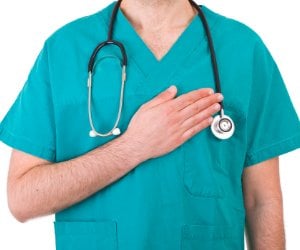I am getting restless hearing about what may or may not happen to the Affordable Care Act. And I am worried about the 18 to 22 million Americans who currently receive coverage through it.
As health professionals in training, we are often tasked with keeping the system running and making sure nothing slips through the cracks. We spend time getting to know our patients, diligently maintaining their records, finding extra resources, and going out of our way to call, page, and text residents and supervisors when our patients’ health is in jeopardy.
This moment should be no different.
In the news and on social media, we hear about rising instances of activism: petition your medical societies, call your congressional representatives, march on Washington. But, as health professional students, we participate in our own quiet form of activism: one patient at a time.
To us, our patients are our patients, regardless of insurance status. We have taken care of uninsured individuals throughout our training (often our best teachers). We live to learn and to help. And if we know how, we will.
The fact is that millions of Americans are uninsured today. Millions more, currently covered through the Affordable Care Act (ACA), are at risk of joining their ranks. These individuals are our family, our neighbors, our patients.
And right now, we are in a unique position to help.
So here are 8 ways we, as health professional students, can uniquely help those without coverage:
1. Pledge to care for uninsured patients at www.22MillionLives.org (#22MillionLives).
2. Go the extra mile for our uninsured patients – find someone to translate, get a discount Rx card, help schedule appointments, or even just sit, listen, and care.
3. Listen to our patients who receive coverage through the ACA, and discuss their concerns and fears. It is important to care for our patients holistically.
4. Advocate for uninsured patients within our care teams. Help them understand and consider our patients’ socioeconomic determinants of health.
5. Tell our patients’ stories. Hearing about those who are uninsured brings a human face to the challenge.
6. Volunteer – even a few hours a week – at a public hospital or safety net clinic (https://findahealthcenter.hrsa.gov/). The safety net is a network of public hospitals, community health centers, and free clinics that provide affordable primary care for our nation’s underserved.
7. Help our uninsured patients access expert insight by posting their cases through free services like the Human Diagnosis Project (www.humandx.org).
8. Share this post and #22MillionLives so that others can help too.
